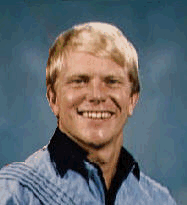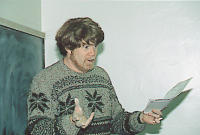
|
The Mathematical Association of America Maryland-District of Columbia-Virginia Section |
- Home
- History
- Main History Page
- Section History Document
- List of Past Officers
- Charter Members
- African-American Participation
- Stories from Section Members
- Section NExT Fellows
- Obituaries
- Smith Award Recipients
- Christensen Award Recipients
- Meritorious Service Award Recipients
- Undergraduate Award Winners
- Meeting Archive
- Past Meetings
- Talk Archive
- Old Section NExT Programs
- Newsletter Archive
- Meeting Minutes Archive
- Miscellaneous Documents
- Meetings
- Minutes
- Fall 2024 Executive
- Fall 2024 Membership
- Spring 2024 Executive
- Spring 2024 Membership
- Fall 2023 Executive
- Fall 2023 Membership
- Spring 2023 Executive
- Spring 2023 Membership
- Fall 2022 Executive
- Fall 2022 Membership
- Spring 2022 Executive
- Spring 2022 Membership
- Fall 2021 Executive
- Fall 2021 Membership
- Spring 2021 Executive
- Spring 2021 Membership
- Fall 2020 Executive
- Fall 2020 Membership
- Fall 2019 Executive
- Fall 2019 Membership
- Spring 2019 Executive
- Spring 2019 Membership
- Fall 2018 Executive
- Fall 2018 Membership
- Spring 2018 Executive
- Spring 2018 Membership
- Fall 2017 Executive
- Fall 2017 Membership
- Spring 2017 Executive
- Spring 2017 Membership
- Minutes Archive
- Newsletters
- Section NExT
- Awards
- Students
- Links
- Search
Fall 1999 Meeting at Loyola College in Maryland
The fall meeting of the MD/DC/VA Section of the MAA was held on November 12 and 13 at Loyola College in Maryland, Baltimore, MD. The program began with a reception and banquet Friday evening, featuring an address by George Nelson, Director of the AAAS Project 2061. On Saturday there were addresses by Rodica Simion, George Washington University, and Bud Brown, Virginia Tech, a workshop by Dan K. Bell and Steve Casey, and contributed papers. Invited Addresses
George NelsonAmerican Association for the Advancement of ScienceBanquet Address: Project 2061 and Mathematics Instruction in Middle School and High School Abstract: In 1985, the American Association for the Advancement of Science launched a long-term effort to reform science, mathematics, and technology education for the 21st century. That same year, Halley's Comet was approaching the sun, prompting the project's originators to consider all of the scientific and technological changes that a child entering school in 1985 would witness before the return of the comet in 2061-hence the name, Project 2061. With panels of scientists, mathematicians, and technologists, Project 2061 first set out to define science literacy. The panels prepared reports that were integrated into the 1989 publication Science for All Americans, which outlines what all high school graduates should know and be able to do in science, math, and technology and lays out principles for effective learning and teaching. Project 2061 continues to seek similar guidance from outside educators, scientists, and business people through its advisory body, the National Council on Science and Technology Education. One component of Project 2061 is focused on mathematics instruction. Under this heading, an analysis of content and instruction in middle school mathematics texts has just recently been posted on the internet. This analysis seeks to determine the likely effectiveness of the textbooks in helping students achieve key mathematics learning goals. This past June Project 2061 launched two new initiatives: the evaluation of high school mathematics and science textbooks and a three-year study of assessment. This presentation will discuss the Project 2061, with a particular emphasis on the mathematics components mentioned above. Biographical Sketch: Dr. Nelson is an astrophysicist who has been deeply involved in science and science education throughout his career. Not content with an academic study of the stars from the ground, he got first hand experience of space exploration by becoming an astronaut, and is a veteran of three space shuttle missions. Over the last several years he has focused on issues of science literacy, and is currently the head of a AAAS project dedicated to reforming science education at the K-12 level. The AAAS is well known as the publisher of the journal Science and as a broadbased professional organization for scientists. The AAAS programs and meetings include a healthy mathematics component (designated Section A), as has been regularly reported in the MAA's FOCUS newsletter. There are obvious connections between the efforts in the mathematics community to improve education at all levels, and the AAAS efforts in the broader arena of science and technology education. In Dr. Nelson's presentation, Project 2061 and Mathematics Instruction in Middle School and High School MAA members will have an opportunity to learn about some of these connections, and to gain a greater awareness of the links between the concerns and interests of mathematicians and scientists. Dr. Rodica SimionGeorge Washington UniversityInvited Address: Combinatorial Aspects of Convex Polytopes Abstract: Dr. Simion will present Combinatorial Aspects of Convex Polytopes. A convex polytope is the convex hull of a finite set of points in Euclidean space. These objects arise in both theoretical and applied questions, from classical geometry to modern optimization. Dr. Simion's presentation will discuss a selection of remarkable results and survey some of the intriguing combinatorial properties of polytopes. Biographical Sketch: Rodica Simion has been on the faculty of George Washington University (GW) since 1987. She is an accomplished researcher in the areas of enumerative combinatorics and partially ordered sets, and has held several visiting positions at research institutes in the US and abroad. She has also been very active as both a speaker and organizer of conferences in her field. Dr. Simion's professional activities extend beyond her research, including service as an Associate Editor for the Monthly, founding the GW Summer Program for Women, and being co-director of the project that created Beyond Numbers, the popular mathematics exhibit displayed at Baltimore's Maryland Science Center from 1994 to 1999, and which continues to travel to science museums around the country. 
Dr. Ezra (Bud) BrownVirginia TechInvited Address: Love Letters, M & M's and Circe's Cave Abstract: Dr. Brown's presentation, Love Letters, M&M's and Circe's Cave, concerns Public Key Cryptography, a subject whose applications are essential to modern electronic life: smart cards, electronic transfer of money, digital cash, and computer security. At the same time, this subject involves beautiful mathematics with a venerable history. Indeed, mathematicians of a generation ago would doubtless be shocked to learn that a subject traditionally prized for its beauty and purity has turned out to have such profoundly practical applications! The story of these applications, and the mathematics behind them, is a fascinating chapter in the book of mathematics. Biographical Sketch: Dr. Bud Brown is Professor of Mathematics Virginia Tech. Besides research interests in number theory and discrete mathematics, Dr. Brown is known for his commitment to teaching and working with students, including involvement in Tech's Emerging Scholars Program and with the Tech Math Club. He was an Edward S. Diggs Teaching Scholar in 1997, and winner of the MD-DC-VA Section's 1999 Distinguished Teaching Award. 
Dan K. Bell and Stephen D. CaseyTiffin University and American UniversityWorkshop: Complex Mappings From an Evolutionary Viewpoint (A New Way to See Some Classical Mathematics) Workshop Abstract: The graph of a complex-valued function of a complex variable lives in four real dimensions. Given that we only live in three spatial dimensions, visualization is tricky. The workshop shows us how we can use our fourth dimension -- time -- as a tool to help us understand complex functions. We watch a given function evolve in time, starting from the unaltered complex plane and ending with the range of the function. Mathematically, this deformation of the function is a homotopy, from the identity to the target function. The computer provides us with an ideal tool to see this evolution. We compute a frame-by-frame movie of the evolution "off-line," and show it at relatively high speed, giving the appearance of a continuous deformation. This new approach of teaching complex functions appears to lead not only to a much quicker, but also to a much deeper, understanding of complex functions. The workshop will present excerpts of the computer projects used by students in the complex variables class at American University. The participants will not only get experience in using the software, but will also discuss how this new learning tool interfaces with a traditional complex class. The workshop closes with the participants exploring some of the more visually stunning aspects of complex variables, from views of infinity on the Riemann sphere, to Escher's tilings of the Poincare disk. Biographical Sketch: Steve Casey is well known for his accomplishments as both a researcher and teacher at American University. He is identified by numerous students as the teacher who kindled their interest in mathematics, both for his role in the classroom, as well as for his involvement with extra curricular activities, including coaching the Putnam Exam team, serving as faculty advisor for the math club, and supervising research projects. In 1997 two of his students made a prize winning presentation at the MAA Spring Section meeting. And this spring Casey was recognized with a university wide teaching award. Recently, Casey has been very involved with special computer software for visualization in complex analysis, including work with Dan Bell. Their workshop, Complex Mappings From an Evolutionary Viewpoint (A New Way to See Some Classical Mathematics) will introduce participants to this software, and give them a chance to see some of its features. Dan K. Bell completed his Ph.D. in Mathematics Education under the supervision of Steve Casey. Bell's dissertation research studied the effectiveness of the computer software that will be used in the workshop at this meeting. His experience with this software both as a teacher and a researcher in mathematics education will be especially valuable to participants at the workshop. |
Copyright © 2012 - The Mathematical Association of America
Please send comments, suggestions, or corrections for this page to Brian Heinold at heinold@msmary.edu
Last Modified: 03/05/2012 - 09:16pm